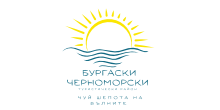Rock-formations in the Balkan Mountains
Rock-formations in the Balkan Mountains, located on the territory of the municipalities of Aytos and Ruen – The Three Petrified Brothers, the Kazanite, the Professor
The Three Brothers is a rock formation in the form of human figures, which rise 200 meters above sea level in the locality of Kazanite, 300 meters east of the town of Aytos. The rock-formation the “Three Petrified Brothers" has an area of 1 ha and falls within the Natura 2000 area, part of the European Ecological Network. It was declared a natural landmark in 1972.
